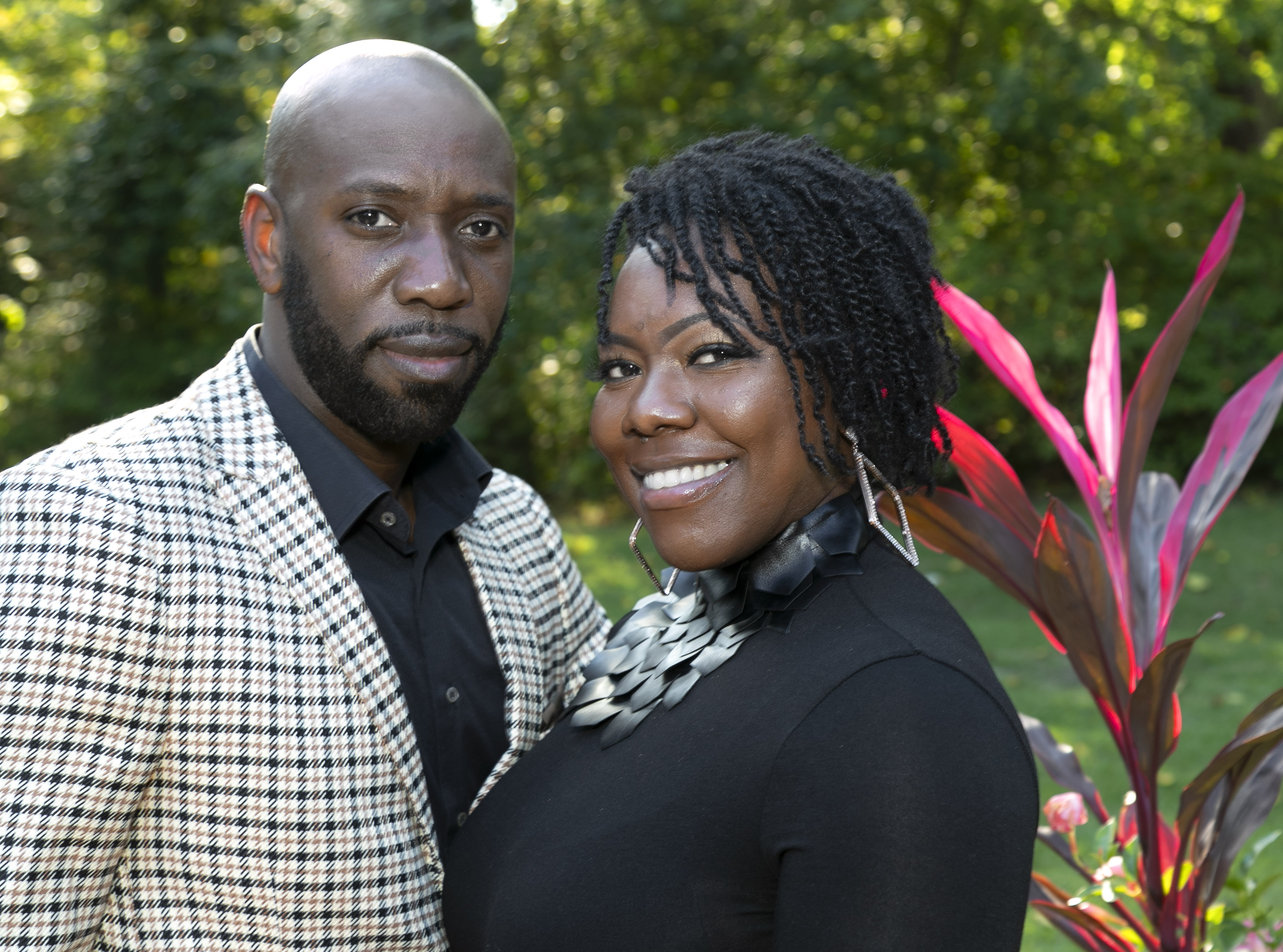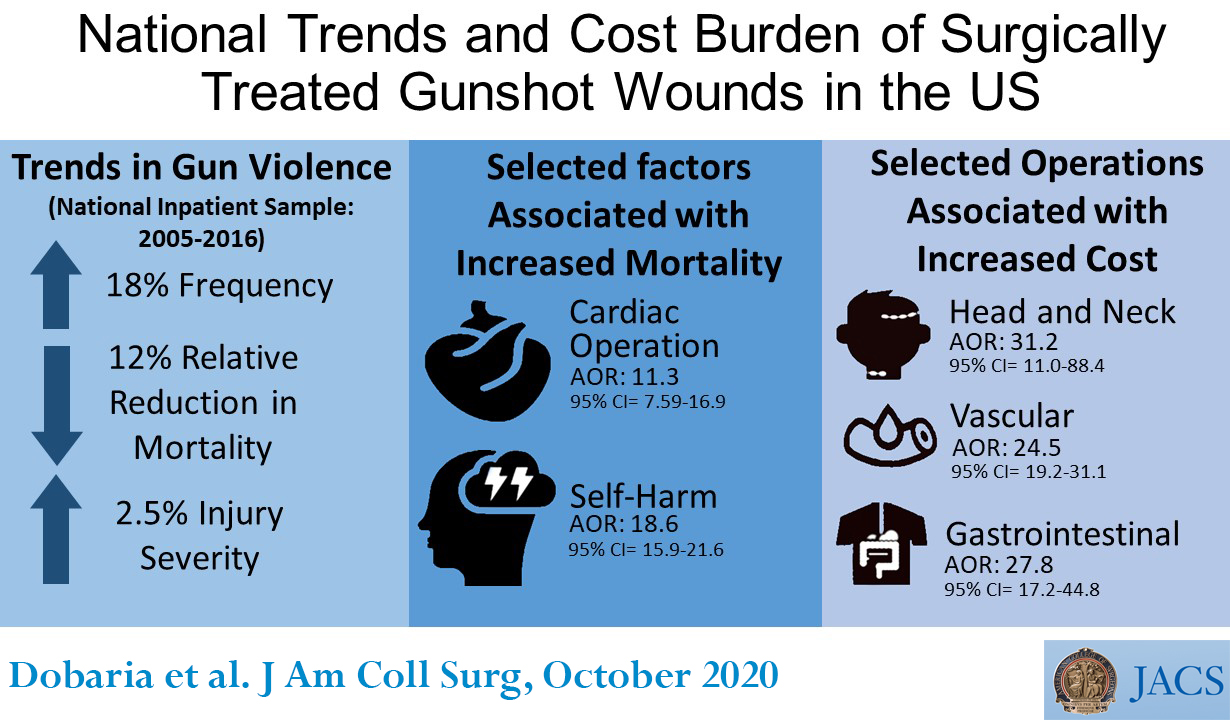A new study examined the impact changes to background checks and licensing policies has made on different types of violent crime in Massachusetts. The study found no immediate impact, suggesting that state lawmakers may want to ensure their legislation is being implemented as intended.
Tag: Gun Violence
U.S. gun violence increased 30% during COVID-19 pandemic
Gun violence increased by more than 30% in the United States during the COVID-19 pandemic, according to a new study by Penn State College of Medicine researchers.
U-M receives $6M CDC grant to advance youth firearm violence prevention research
Middle- and high school-age children across the United States are more likely to die as the result of a firearm injury than from any other single cause of death.
Gun Violence Exposure Associated with Higher Rates of Mental Health-Related ED Visits by Children
Exposure to neighborhood gun violence is associated with increased odds of mental health-related pediatric Emergency Department (ED) visits among children living within four to five blocks of a shooting, according to research by the Perelman School of Medicine at the University of Pennsylvania and Children’s Hospital of Philadelphia, published today in JAMA Pediatrics.
Surgeons endorse advocacy efforts to improve firearm safety and reduce firearm-related injuries
Results from a survey of 54,761 U.S. ACS members, of whom 11,147 responded, have been published as two articles on the website of the Journal of the American College of Surgeons (JACS)
City-Funded Housing Repairs in Low-Income Neighborhoods Associated with Drop in Crime
In Philadelphia, when a home received repairs through a city-funded program, total crime dropped by 21.9% on that block, and as the number of repaired houses on a block increased, instances of crime fell even further, according to research from the Perelman School of Medicine at the University of Pennsylvania published today in JAMA Network Open.
Hopkins Med News Update
NEWS STORIES IN THIS ISSUE:
– Johns Hopkins Medicine Celebrates Its Contributions to Keto Therapy as Diet Turns 100
– COVID-19 News: Can Dietary Supplements Help the Immune System Fight Coronavirus Infection?
– Johns Hopkins Medicine Helps Develop Physician Training to Prevent Gun Injuries, Deaths
– COVID-19 News: Study Says Pandemic Impaired Reporting of Infectious Diseases
– Johns Hopkins Medicine Helps Create Treatment Guide for Neurodegenerative Disorders
– Johns Hopkins Pediatrics Says, ‘Get Kids Required Vaccines Before Going Back to School’
Most Californians unaware of law to prevent gun violence but would support using it
A new study shows that two-thirds of Californians don’t know about a law designed to prevent a person at risk of hurting themselves or others from possessing or purchasing firearms or ammunition. More than 80% of survey participants were supportive once they read about this law.
2021 Posters on the Hill Spotlights Exemplary Undergraduate Research Projects for Policymakers, Scholars, and the Public
Via a virtual public poster session on April 28, undergraduate researchers from colleges and universities in 42 states and the District of Columbia will share their research projects in the 2021 Posters on the Hill event, sponsored by the Council on Undergraduate Research.
Firearms Laws Curb Rates of Gun Violence Across United States
States with stricter firearms laws reported lower suicide and homicide rates, according to a Rutgers study.
Rutgers Expert Available to Comment on President Biden’s Plan to Address Gun Violence
Michael Anestis, director of the New Jersey Gun Violence Research Center and associate professor at Rutgers School of Public Health, is available to discuss President Biden’s plan to address gun violence in the United States. “The Biden administration has announced…
Gun Violence Researcher at Rutgers Available to Discuss Recent Shootings
A Rutgers gun violence researcher is available to discuss the factors surrounding gun violence in the United States. “Gun violence claims too many lives every day, and the tragedies in Atlanta and Boulder highlight that our country has thus far…
Association of American Cancer Institutes Issues Statement Condemning Racism, Violence
In a formal statement, the Association of American Cancer Institutes (AACI) condemned racism, discrimination, and gun violence, urging that these issues be confronted as public health crises.
The Messenger Matters in Safe Gun Storage, Suicide Prevention Education
Law enforcement and those in the military, rather than doctors and celebrities, are the most preferred messengers on firearm safety, a Rutgers study found.

Handgun Ownership Associated with Firearm Suicide
Handgun ownership, not shotgun ownership, is associated with greater odds of a person having died from self-inflicted gunshot wound rather than another suicide method, according to Rutgers researcher
States with More Gun Laws Have Lower Youth Gun Violence, Rutgers Study Finds
Gun violence among children is lower in states with more gun laws, according to a Rutgers-led study.
Study Finds NRA Stakeholders Conflicted in Wake of Shootings
A recent study finds that, in the wake of a mass shooting, NRA employees, donors and volunteers had extremely mixed emotions about the organization – reporting higher levels of both positive and negative feelings about the NRA, as compared to people with no NRA affiliation.

Pandemic Fears Driving Firearm Purchases
Stress related to the coronavirus pandemic and the uncertainty of what the future holds is motivating people to purchase firearms, a trend that may be more prevalent in those who already own firearms, according to a Rutgers study.
329 People Injured by Firearms in U.S. Each Day, But for Every Death, Two Survive
Researchers examine trends in fatal and nonfatal firearm injuries to inform prevention strategies, finding that twice as many people who died from gunshots survive
Trauma Hospitalizations Fall in Philly During COVID-19 Lockdown, But Gun Violence Rises
Non-intentional trauma fell compared to the period before COVID this year, but ratios of gun violence patients increased after stay-at-home orders were implemented, and were high compared to the same timeframe in previous years
Media’s Reporting on Gun Violence Does Not Reflect Reality, Study Finds
When looking at media reports in three cities, half of victims were covered in the news, but a disproportionate amount of attention was given to less common circumstances and victims

UA Little Rock alumni begin endowed scholarship to help students who have lost loved ones because of domestic or gun violence
A pair of University of Arkansas at Little Rock graduates have made a donation of $30,000 to start a scholarship for students who have lost loved ones due to domestic or gun violence.
Rutgers Expert Available to Discuss Gun Violence Surge During Coronavirus Pandemic
Michael Anestis, executive director of the New Jersey Gun Violence Research Center and an associate professor at the Rutgers School of Public Health, is available to discuss the surge in gun violence during the coronavirus pandemic. “COVID-19 has highlighted systemic…
Addressing social causes of violence will be key to reducing gun deaths, American College of Surgeons task force says
As gun deaths continue to increase in the United States, the American College of Surgeons Improving Social Determinants to Attenuate Violence (ISAVE) task force outlined steps the medical community must take to understand and address the root causes of gun violence.
Gun owner perceptions about actual firearm dangers suggest opportunities for improving gun safety
People who own guns and those living with gun owners are substantially less worried about the risk of firearm injuries than individuals living in homes without guns, says a new study by violence prevention experts at UC Davis Health.

Preventing Firearm Suicide During the Pandemic and Social Unrest
During the pandemic and nationwide protests firearm purchases have soared — a concern for suicide prevention specialists, says a Rutgers expert

Gun Violence Research Center Director Available to Discuss Firearm Issues During 2020 Presidential Campaign
Michael Anestis, executive director of the New Jersey Gun Violence Research Center, is available to provide expert commentary on gun violence issues discussed during the 2020 presidential campaign. The Center is based at Rutgers University and one of the few…
GUNSHOT INJURIES IN CALIFORNIA DROP, BUT PERCENTAGE OF FIREARM DEATHS GOES UP
Despite a significant drop in gun injuries, California has experienced a substantial increase in the state’s overall death rate among those wounded by firearms.

New study documents increasing frequency, cost, and severity of gunshot wounds that require surgical intervention
The rise in firearm violence has coincided with an increase in the severity of injuries firearms inflict as well as the cost of operations.

Gun violence increasing in the pandemic. Researchers seeking solutions. @GunResearch @AmCollSurgeons @UWMedicine
Dr. Frederick Rivara, a professor of pediatrics at the University of Washington School of Medicine, is a nationally recognized expert in reducing gun violence. He co-founded the Harborview Injury and Prevention Research Center in 1985 at UW Medicine. Both he…
UCLA Fielding School of Public Health faculty awarded grant by National Collaborative on Gun Violence Research
A team led by UCLA Fielding School of Public Health professors Ninez Ponce and Michael Rodriguez has received a $596,000 grant from the National Collaborative on Gun Violence Research to address data gaps about gun use and improve firearms policies.
ACS Committee on Trauma awarded grant by National Collaborative on Gun Violence Research
The ACS Committee on Trauma has been awarded a 2-year, $711,218 grant to improve understanding of the individual and community level risk factors for non-lethal firearm injuries in the U.S.
Military Personnel at Risk of Suicide Store Firearms Unsafely
Military personnel who are at a greater risk of suicide are more likely to unsafely store firearms in unlocked cabinets where they can access them easily, according to a Rutgers researcher.
New Report on Enforcement of Gun Laws in Baltimore Finds More Focused Approached Could Reduce Violence, Improve Community Relationships with City Police
A new report from the Johns Hopkins Center for Gun Policy and Research at the Johns Hopkins Bloomberg School of Public Health finds that broad “stop-and-search” practices used for many years by Baltimore police to look for illegally possessed guns have minimal, if any, impact on gun violence. These practices also result in mental and physical harm to those who are unjustifiably searched and serve to undermine community trust in police. The researchers also found that residents of communities most impacted by gun violence in Baltimore want more focused and accountable law enforcement to reduce gun violence.
SURVEY: WOULD-BE PURCHASERS OF FIREARMS IN BALTIMORE’S UNDERGROUND GUN MARKET FACE OBSTACLES
A small survey conducted by researchers at the Johns Hopkins Bloomberg School of Public Health found that more than half of respondents who reported having attempted to acquire a firearm in Baltimore’s underground firearm market in the prior six months were unsuccessful—some due to lack of financial means, and others reporting they had no trusted point of contact for acquiring guns through unlawful means.
Most Mass Shootings Occur Closest to Hospitals without Verification to Treat Trauma
In an analysis of 2019 mass shootings and hospital locations, researchers at Children’s Hospital of Philadelphia (CHOP) found that the closest hospital to more than 70% of mass shootings was a non-trauma center, where sudden, high casualty loads were more likely to overwhelm capacity and trauma-specific care options may have been limited. They also found that in more than half of mass shooting events, the nearest pediatric trauma center was more than 10 miles away.

New Jersey Center on Gun Violence Research Names New Executive Director
Michael Anestis, a public health psychologist and expert on firearms and suicide risk, has been appointed as executive director of the New Jersey Center on Gun Violence Research led by Rutgers University.
STRATEGIES TO LOWER RISK FOR VIOLENT CRIME AND GUN VIOLENCE
With violent crimes and gun violence rising annually and the number of gun deaths in the U.S. surpassing all other nations, researchers at the annual meeting of The Society for Risk Analysis (SRA) present a series of studies during its Study of Violent Crime and Gun Violence symposium which contributes several new frameworks that can be used toward improving laws, civilian strategies, legislation and police response, as well as the overall study of risk in society. The Symposium will occur on Monday, December 9 at 10:30 at the Crystal Gateway Marriott in Arlington, Virginia.
Gun Violence, Bullying and Poverty Again Named as Top Three Social Concerns for Youth by Chicago Parents
Consistent with last year, Chicago parents again selected gun violence, bullying/cyberbullying and poverty as the top three social problems for children and adolescents in the city, according to the latest survey results released by Ann & Robert H. Lurie Children’s Hospital of Chicago and the Chicago Department of Public Health (CDPH). Hunger was new to this year’s top 10 list of social issues facing youth, with 62 percent of parents across all community areas in Chicago considering it a big problem.
To reduce gun violence, lift roadblocks to firearm data
While gun violence in America kills more than 35,000 people a year and as calls for policies to stem the crisis grow, University of Washington researchers point out in a new analysis that barriers to data stand in the way of advancing solutions.
Study: More behavioral health care linked to small drop in gun-related suicides
An increase in behavioral health providers is associated with a slight decrease in gun-related suicides, but the difference is small and points to a need to tackle gun violence in other ways, according to the authors of a new study.
From Hate Speech to Hate Crimes
UNLV sociologist researches how interacting in online white supremacist networks can convert hateful words into real violence.
Giving Trauma Patients a Hormone that Helps Stabilize Blood Pressure Cuts Blood Transfusions by Half
Giving trauma patients with severe blood loss the hormone arginine vasopressin (AVP) cut the volume of blood products required to stabilize them by half, according to results of a new, first-of-its-kind clinical trial from Penn Medicine. The authors say the study is particularly important for the treatment of patients with gun-related injuries. Each year, there are over 100,00 firearm-related injuries with over 36,000 deaths.